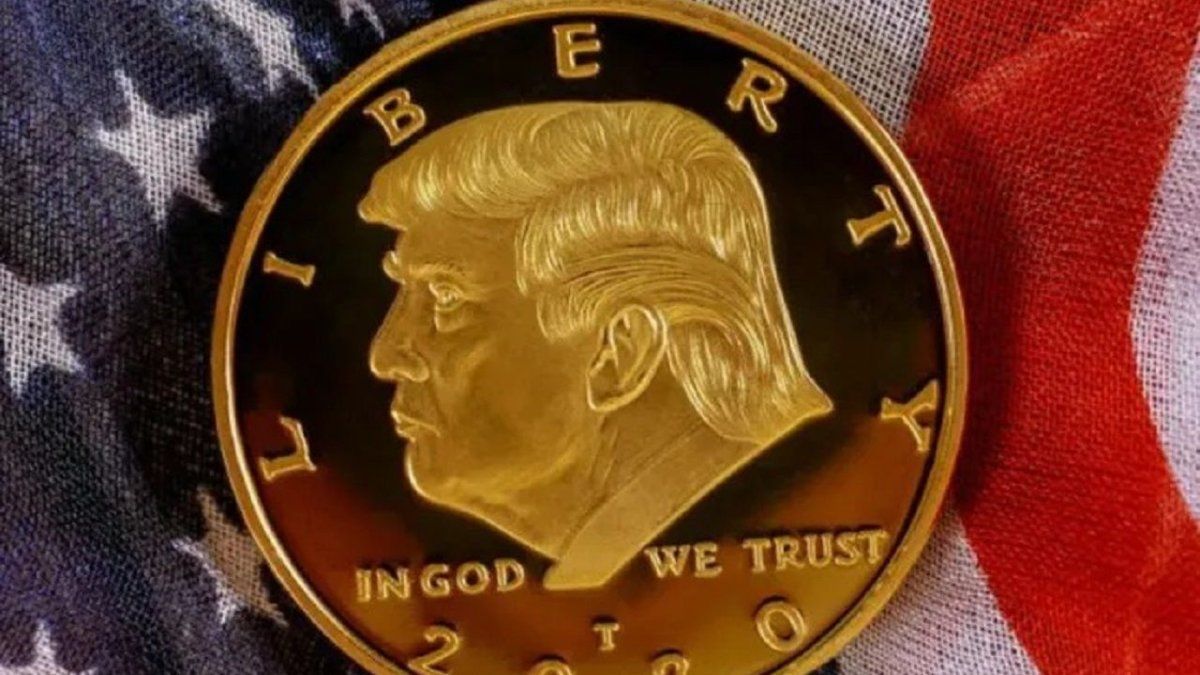The imposition of new commercial tariffs by the United States government, led by Donald Trump, has unleashed a wave of uncertainty in global financial markets.
The measure, baptized by the president as a “day of liberation”, includes 30% rates on strategic products such as steel, aluminum and electronic components, and has caused immediate reprisals by China, the European Union and several Latin American countries.
As a consequence, the main stock indices have registered pronounced falls. The S&P 500 accumulated a setback greater than 8% in the last five days, its worst weekly performance from the 2020 pandemic.
Faced with the growing nervousness in traditional markets, investors are resorting again to cryptocurrencies as an active refuge. According to Coinmarketcap, Bitcoin and Ethereum data, they led a 23% rebound in the crypto market during the same period.
Tariffs and imbalances: the new epicenter of instability
The announcement of tariffs triggered a domino effect on emerging and developed economies. Although the Trump administration justifies the measure as a strategy to protect local industry, economists warn about the systemic risks of a protectionist escalation.
María Fernanda Juppet, CEO of Cryptomkt – one of the most important exchanges in Latin America – reported that Bitcoin operations on their platform increased 41% in the first 72 hours after the announcement.
“The new measures reflect a growingly volatile global scenario. In this context, many investors seek decentralized assets that are not subject to national political decisions or borders,” he explained.
Cryptocurrencies: Refugio in the face of geopolitical uncertainty?
Interest in digital assets intensified rapidly:
- Bitcoin surpassed the $ 75,000 for the first time since June 2024.
- The Ethereum Institutional Wallets increased their reservations in a 17% In just a week.
- Stablecoins like USDC and DAI They increased their circulation in a 29%evidencing a migration to low -risk digital instruments.
Juppet points out a pattern that has been historically repeated: every time commercial policies are hardening in the main economies, the attractiveness of cryptocurrencies grows as a value shelter.
“Tariffs could accelerate the adoption of cryptoactives as a defense against inflation or loss of Fiat currency competitiveness,” he added.
During the commercial war between the US and China in 2018, Bitcoin doubled its value in six months. Now, some analysts estimate that, if tensions persist, their price could stabilize above $ 100,000 Before the end of the year.
Macroeconomic analysis: a deeper crisis
For Pablo Rutigliano, CEO of Atomico 3 – specialized in the tokenization of minerals – the current situation responds to long -term imbalances:
“The problem is not just tariffs. There is a structural dysfunction in the global economic model. The United States aims to be supplier and economic center, but with a chronic commercial deficit, protectionist policies end up fracturing entire value chains.”
Rutigliano warns that key sectors such as energy already show signs of overload, with recessive impacts in Latin America and Europe. “Without an orderly transition towards electromobility, many countries will be forced to assume unsustainable levels of debt,” he warned.
Three pillars to avoid collapse
According to the Executive, any structural solution must be based on three fronts:
- Global economic restructuringbased on opening and elimination of artificial barriers.
- Coordinated energy transitionwith investments in sustainable infrastructure.
- Redefinition of the financial systemincorporating digital assets to international reserves and payments.
In line with this vision, defenders of cryptocurrencies argue that their decentralized character makes them immune to unilateral decisions such as tariffs. “They are not just investment instruments, they are tools to protect assets in times of uncertainty,” says Juppet.
A new financial order?
The current volatility highlights the fragilities of a system based on nationalist fiduciary currencies and policies. While traditional gold has risen 9% year -on -year, Bitcoin has done so in 58%, reinforcing its narrative as “digital gold.”
Rutigliano concludes with a warning:
“The path of restrictions and imbalances does nothing more than deepen the crisis. Cryptocurrencies are part of the solution, but a structural transformation is needed that includes all economic actors.”
For now, the market is already reacting: according to Glassnode data, addresses with more than 1 bitcoin reached a historical record of 1.2 million this week. In a world where the rules change overnight, decentralization is emerging as the only stable anchor.
Source: Ambito
I am a 24-year-old writer and journalist who has been working in the news industry for the past two years. I write primarily about market news, so if you’re looking for insights into what’s going on in the stock market or economic indicators, you’ve come to the right place. I also dabble in writing articles on lifestyle trends and pop culture news.




